The One World Tartarians
The Greatest Civilization
Ever to Be Erased From History
James W. Lee
Chapter 17
Grand Exhibitions & Amazing
Amusement Parks
Note that most of these Great Exhibitions and Amusement Parks only were erected,
opened in less than one year at many sites, than were burned by fires, many immediately thereafter. Sometimes by design and sometimes by ‘accident’. There were over 75
world exhibitions before 1870! (Please see Appendix II for the list of the hundreds of exhibitions
up to 1930).
As you will read, the exhibitions worldwide were grandiose, extravagant, attended by millions,
and brought people and resources from all around the world. This was likely the remnants of
the fun, fun, fun loving Tartarian’s. Also, the worldwide participation from as far away as the
Samoa, Alaska, China, South America, Hawaii etc., means they would have had to sail all their
equipment across the Oceans to come to these huge events. And how did they communicate with
the world’s people to get them to come and arrange for their travel, lodging and meet them at
the docks, then carry and set up the incredibly elaborate displays…..all using horse and buggy
to build out the exhibitions.
At the Chicago World’s Exhibition in 1893 it is claimed that ¼ of the entire population of the
USA at that time had attended the fair. Again, how were they notified, where did they lodge
and get transported? You will see some of the most amazing structures for education, community
and FUN! The exhibition’s excuse for hosting ranged from celebrating the opening of the Panama
Canal, to the harvesting of electricity to the celebration of the Louisiana Purchase. Many times the
event builders had to dredge record amounts of dirt and fill to hold the exhibitions on, or near
water. Water, we will learn, is an energy conductor and was necessary to power the exhibitions
to light them up at nighttime.
I focused on providing narratives and images to the exhibitions from the 1850 -1930 because
this was still considered before commercial airplanes, national highways and large-scale engines
to move great stones and steel and such. It is also very interesting to note that during this time
period there were 22 “International Exhibitions” being held during great economic hardships and
even World War I that went from July 1914 to November 1918. Now how was this even possible
given there was a World War going on at the same exact time.
• 1914 – London – Anglo-American Exhibition
• 1914 – Malmö, Sweden – Baltic Exhibition
•1914 Boulogne-sur-Mer, France – International Exposition of Sea Fishery Industries
• 1914 – Lyon, France – Exposition internationale urbaine de Lyon
• 1914 – Tokyo, Japan – Tokyo Taisho Exposition
• 1914 – Cologne, Germany – Werkbund Exhibition (1914)
• 1914 – Bristol, United Kingdom – International Exhibition (1914)[82]
• 1914 – Nottingham, United Kingdom – Universal Exhibition (1914) (work begun on
site 1913 but never held)
• 1914 – Semarang, Dutch East Indies – Colonial Exhibition of Semarang (Colonial
Exposition)
• 1914 – Kristiania, Norway – 1914 Jubilee Exhibition (Norges Jubilæumsudstilling)
• 1914 – Baltimore, United States – National Star-Spangled Banner Centennial
Celebration[85]
• 1914 – Genoa, Italy – International exhibition of marine and maritime hygiene
• 1915 – Casablanca, Morocco – Casablanca Fair of 1915
• 1915 – San Francisco, United States – Panama–Pacific International Exposition Palace
of Fine Arts
• 1915 – Panama City, Panama – Exposición Nacional de Panama (1915)
• 1915 – Richmond, United States – Negro Historical and Industrial Exposition (1915)
• 1915 – Chicago, United States – Lincoln Jubilee and Exposition (1915)
• 1915–1916 – San Diego, United States – Panama–California Exposition
• 1916 - Wellington, New Zealand - British Commercial and Industrial Exhibition
• 1918 – New York City, United States – Bronx International Exposition of Science,
Arts and Industries[79]
• 1918 – Los Angeles, United States – California Liberty Fair (1918)
There was also great economic crisis’ and hardships during the time of the World Exhibitions.
* Panic of 1857, a U.S. recession with bank failures
* Panic of 1866, was an international financial downturn that accompanied the failure of
Overend, Gurney and Company in London
* Great Depression of British Agriculture (1873–1896)
* Long Depression (1873–1896)
* Panic of 1873, a US recession with bank failures, followed by a four-year depression with
the Panic of 1884
* Panic of 1893, a US recession with bank failures
* Australian banking crisis of 1893
* Panic of 1896
* Panic of 1901, a U.S. economic recession that started with a fight for financial control of the
Northern Pacific Railway
* Panic of 1907, a U.S. economic recession with bank failures
* Depression of 1920-21, a U.S. economic recession following the end of WW1
* Wall Street Crash of 1929 and Great Depression (1929–1939) the worst depression of modern
history
The Great London Exhibition (1851)
Lasting just 6
months, More than
14,000 exhibitors
from around the
world... 6,039,722
visitors—equivalent
to a third of the entire
population of Britain
at the time—visited
the Great Exhibition. The Great
Exhibition of the Works of Industry of All Nations or The Great Exhibition (sometimes referred
to as the Crystal Palace Exhibition in reference to the temporary structure in which it was held),
an international exhibition, took place in Hyde Park, London, from 1 May to 15 October 1851.
It
was the first in a series of World’s Fairs, exhibitions of culture and industry that became
popular in the 19th century. The Great Exhibition was organized by Henry Cole and
by Prince Albert, husband of the reigning
monarch of the United Kingdom, Queen
Victoria. Famous people of the time attended,
including Charles Darwin, Karl Marx, Samuel
Colt, members of the Orléanist Royal Family
and the writers Charlotte Brontë, Charles
Dickens, Lewis Carroll, George Eliot, Alfred
Tennyson and William Makepeace Thackeray.
The Crystal Palace was an enormous success,
considered an architectural marvel, but also
an engineering triumph that showed the importance of the Exhibition itself. The building was
later moved and re-erected in 1854 in enlarged form at Sydenham Hill in south London, an area
that was renamed Crystal Palace. It was
destroyed by fire on 30 November 1936.
Visitors “could watch the entire process
of cotton production from spinning to
finished cloth. Scientific instruments
were found in class X, and included electric telegraphs, microscopes, air pumps
and barometers, as well as musical, horological and surgical instruments.”
Paris Exposition Universelle of 1855 & 1889
The Exposition Universelle of 1855 was an International Exhibition held on the Champs-Élysées in Paris from 15 May to 15
November 1855. Lasted only 6 months, then destroyed. The exposition covered 16 hectares (40 acres) with 34 countries participating.
According to its official report, 5,162,330 visitors attended the
exposition. The arts displayed were shown in a separate pavilion
on Avenue Montaigne. There were works from artists from 29
countries. For the exposition, Napoleon III requested a classification system for France’s best Bordeaux wines which were to be on
display for visitors from around the world. Brokers from the wine
industry ranked the wines according to a château’s reputation and
trading price, which at that time was directly related to quality. The result was the important
Bordeaux Wine Official Classification of 1855.
The Exposition Universelle of 1889 was a world’s fair held in Paris,
France, from 6 May to 31 October 1889, lasting only 6 months. It was the
fourth of eight expositions held in the city
between 1855 and 1937. It attracted more
than thirty-two million visitors. The most
famous structure created for the Exposition, and still remaining, is the Eiffel
Tower. One important goal of the Exposition was to present the latest in science
and technology. Thomas Edison visited
the Exposition to visit a pavilion devoted to his recent inventions, including an improved phonograph with clearer sound
quality.
Another new technology that was promoted at the Exposition was the safety elevator,
developed by a new American company, Otis Elevator. Otis
built the elevators carrying passengers up the legs of the
Eiffel Tower to the first level. When journalists expressed
concern about the safety of the elevators, Otis technicians
filled one elevator with three
thousand kilograms of lead,
simulating passengers, and
then, with journalists from
around the world watching,
cut the cable with an axe.
The elevator’s fall was
halted ten feet above the ground by the Otis safety brakes. There
were pavilions especially devoted to the telephone and to electricity,
and others devoted to maritime navigation, and another, the Palais
de Guerre or Palace of War, to developments in military technology,
such as naval artillery.
1897 Brussels International Exposition
The Brussels International Exposition of 1897 was a World’s fair
held in Brussels, Belgium, from May 1897 through November 1897,
lasting just 7 months. There were 27 participating countries, and an
estimated attendance of 7.8 million people! A public favorite at the
World’s fair was Vieux-Bruxelles (also called Bruxelles-Kermesse), a
miniature city and theme park evoking Brussels around 1830. Somewhat foreshadowing Main Street at Disneyland, Vieux-Bruxelles offered
visitors nostalgic, smaller-size reproductions of historic buildings.
Melbourne International Exhibition (1880)
The Melbourne International Exhibition is the eighth World’s fair
officially recognized by the Bureau International des Expositions (BIE)
and the first official World’s Fair in the Southern Hemisphere. The
Melbourne International Exhibition was held from 1 October 1880 until 30 April 1881. It was the
second international exhibition to be held in Australia, the first being held the previous year in
Sydney. 1.459 million people visited the exhibition.
National Exposition of Brazil, Rio de
Janeiro (1908)
The national commemorative Exhibition of the
centenary of the opening of the Ports of Brazil, also
known as Brazilian National Exposition of 1908 or the
National Exposition of Brazil at Rio de Janeiro, marked
a hundred years since the opening of the Brazilian ports
and celebrated Brazil’s trade and development.[3] It
opened in Urca, Rio de Janeiro on 11 August, stayed open
for only 3 months and received over 1 million visitors.
Russian Industrial & Art Exhibition Novgorod, Russia (1896)
The All-Russia Industrial and Art exhibition 1896 in Nizhny Novgorod was held from May
28 (June 9 N.S.) till October 1 (13 N.S.), 1896. The 1896 exhibition was the largest pre-revolution
exhibition in the Russian Empire and was organized with money allotted by Nicholas II, Emperor
of Russia.The exhibition demonstrated the best achievements of the industrial development in
Russia that began in the latter part of the 19th century.
• an early radio receiver (thunderstorm register) designed by Alexander Stepanovich Popov;
• the first Russian automobile designed by Evgeniy Yakovlev and Pyotr Freze;
• the world’s first hyperboloid steel tower-shell (Shukhov
Tower) and the world’s first steel lattice hanging and
arch-like overhead covers-shells
The Many Many USA Expositions and
Exhibitions from 1838 -1930
And so the Story goes…
The first Exposition in the US was held in Cincinnati in 1838. It was actually a Fair of the Ohio
Mechanics Institute held in the nation’s first permanent exhibition hall. Other cities began holding
similar expos, and building similar Exposition Halls – some grander than others, but all were
based on the same principal – they needed to be large and impressive and able to be built quickly.
And then there were the international expositions, which generally began with London’s famous
Crystal Palace in 1851. It’s stated plan was “to illustrate British Industrial Development”. Since
other nations were invited to participate. they each hoped to outdo each other. This exposition
was so successful that other Expos followed in the major cities of Europe. This, of course led to
the establishment of “World Fairs”and then after the success of the Industrial Expositions in the
US, the State Fairs began as a way to let rural America participate.
1893 Chicago’s World Columbian Exposition
With State Fairs, there was no longer a need for the yearly Industrial Expositions. Meant to
celebrate the 400th anniversary of Columbus’s arrival to the New World, the 1893 Columbian
Exposition was better known for its grand vision into the future. Also called the Chicago World’s
Fair, its organizers tried to outdo the Paris Exposition Universelle of 1889. They managed to stun
the world with a 690-acre city-within-a-city that showcased 65,000 exhibits. Columbian Exposition
electricity transformed night skies across America and would soon shape the future.
More than 27 million people–approximately one in four Americans—visited the fair by its close
six months later on Monday, October 30. Chicago had just ‘risen from the ashes’ of the Great
Chicago Fire, which had destroyed much of the city in 1871. Almost all of the fair’s structures
were designed to be temporary; of the more than 200 buildings erected for the fair, the only two
which still stand in place are the Palace of Fine Arts and the World’s Congress Auxiliary Building.
These plans were abandoned in July 1894, when much of the fairgrounds was destroyed in a fire.
Visitors saw a multitude of spectacular new developments including dish washers and a giant
ferris wheel. But it was the new-fangled electricity and all the wondrous contraptions it ran that
captured their imaginations.
Like the Great Exhibit in England 1851, this fair had far reaching impact. . Its scale and grandeur far exceeded the other world’s fairs, and it became a symbol of the emerging American
Exceptionalism, much in the same way that the Great Exhibition became a symbol of the Victorian
era United Kingdom. Edison General Electric, which at the time was merging with the Thomson-Houston Electric Company to form General Electric, put in a US$1.72 million bid to power
the Fair and its planned 93,000 incandescent lamps with direct current.
Visitor could marvel at the wonders of modern technology and during the evenings the buildings were rigged with brilliant light displays courtesy of Nikola Tesla himself. Chicago’s 1893
World’s Columbian Exposition was particularly successful — and famous — thanks in part to a
staggering array of cultural and technological marvels which debuted there, including some of
the first demonstrations of electrical power, the world’s first Ferris Wheel, and the first servings
of the candied popcorn that would later be dubbed “Cracker Jacks.” Nearly all the halls and
pavilions at the fair were temporary.
The Ferris Wheel was a favorite amusement powered
by electricity. George Washington Gale Ferris carried more
than 1.5 million riders to the dizzying height of a 24-story
building where they could view three states at once. The
first giant Ferris wheel had steep highs and lows. The
Midway Plaisance was open for fun well into the night
thanks to AC electric lighting.
One of the fair’s favorite attractions was a 4,500-foot
moving sidewalk with benches for its passengers. It only
cost a nickel. The sidewalk was designed primarily to carry
passengers who arrived by steamboats. It was capable of
moving up to 6,000
people at a time, up to
six miles per hour.
The Midway was an area for amusement, where spectators could casually catch a ride in a hot air balloon, watch
a sideshow, or view the fair in all of its entirety in a new
invention called a Ferris wheel.
Women’s Public Art & Architecture
Sophia Hayden, one of the few women architects in nineteenth-century
America, graduated from the Massachusetts Institute of Technology and,
as her first project, designed the 80,000 square-foot, two-story building
called the Woman’s Building.
A young woman, Hayden evidently suffered some kind of breakdown by the end of the project and never again designed a building. In
charge of this all-woman project was a Board of Lady Managers chaired
by Bertha Potter Palmer, a wealthy and influential patron of the arts.
Placing women in charge of their own building was considered a rather
revolutionary idea at the time and was not enthusiastically supported
by some Fair authorities.
When the World’s Fair opened in
1893, equal rights for women was still
a futuristic dream. American women
couldn’t vote and were relegated to the
margins of public life. But the times
they were slowly changing. Prominent
women spoke at the Fair about a number
of issues, including women’s right icon
Susan B. Anthony, labor rights reformer
Florence Kelley, and abolitionist Julia
Ward Howe. When the Chicago World’s
Fair was funded through Congress,
money was specifically allocated to
make sure that women were represented. By authorizing and funding the Chicago fair’s Board
of Lady Managers [in 1893], Congress was in fact recognizing the increasingly organized and
influential role of women in American society. New technologies such as domestic plumbing,
canning, commercial ice production, and the sewing machine had freed middle-class women from
many household tasks, and more and more women were entering college and the professions.
Many, including upper-class and professional women, were also joining social reform groups,
and these women’s organizations had, in turn, organized to increase their visibility and influence.
Despite the presence of prominent women at the Fair, there were still some important slights.
The Fair’s single largest event, held on July 4, 1893, didn’t include a single woman speaker. In
response, five women from the National Woman Suffrage Association stormed the Independence
Day program and handed a copy of their Declaration of Rights for Women to the chairman of
the event. Women in the United States wouldn’t get the vote until nearly three decades later with
the ratification of the Nineteenth Amendment to the U.S. Constitution in 1920.
The Strange Presentations of Infant
Incubators at the World’s Fairs
Neo Preemie babies, struggling for their lives,
were transferred from hospitals to show off
the new incubators at many World Exhibitions. Some died due to infection from human
contact! They ran these “exhibits” until 1940.
And the store goes …
The babies in incubators were a common
sideshow in the late 19th and early 20th
centuries. Premature infants could be found
at world’s fairs and in permanent exhibitions
like the one at Luna Park. Although infant
incubators were invented in the year 1888 by
Drs. Alan M. Thomas and William Champion,
these devices were not immediately widely used. To increase awareness of the benefits these
units provided, infant incubators containing premature babies were displayed at the 1897, 1898,
1901, and 1904 World Fairs.
Pierre Budin, a French physician who wondered why more hospitals weren’t investing in
incubators. The 1896 World’s Fair was the first babies were displayed. There, Martin Couney,
a German man, saw a display of several premature babies Budin had acquired on loan from a
Berlin hospital (say what???). Couney immediately realized that the unusual exhibit would save
babies’ lives, and that the public would pay to see babies in incubators. The sight was so unusual
that people crowded into the display, paying money while the doctors gave new life to the six
infants. Couney ran the exhibits for decades, even enlisting his daughter Hildegard, the preemie
who survived, to help at an Atlantic City incubator exhibit. He took the babies at no charge and
received them from hospitals all over the country.
Newspapers advertised the incubators with
“lives are being preserved by this method.”
The exhibit required an entrance fee of twenty-five cents and visitors could also purchase
souvenirs and refreshments from the adjoining
shop and café. There were some setbacks with
the infant incubator display as the sanitary
conditions were not always consistent and some
babies died of illness! The incubator area was
then modified by installing glass walls to separate the babies from visitors, thus decreasing
the exposure of the infants. Now known as
“isolettes,” these units are a vital component to
caring for neonates in modern neonatal intensive care units.
The Incredible Light Shows of Electricity
with Edison & Tesla
or the Story goes…
It was the new-fangled electricity and all the
wondrous contraptions it ran that captured the imaginations of all who attended the exhibition. Since much
of the fair was run by AC power, visitors were able
to experience the profound changes electricity would
soon make in their daily lives. Outside the venues,
an elevated railroad carried 50,000 visitors per hour,
while within the venues, visitors were transported
by a loop-line elevated electric railcar, an electric boat
on a canal, and a moving sidewalk.
Famed Journalist, Murat Halstead wrote in Cosmopolitan: “The Fair, considered as an electrical exposition
only, would be well worthy of the attention of the world. Look from a distance at night, upon
the broad spaces it fills, and the majestic sweep of the
searching lights, and it is as if the earth and sky were
transformed by the immeasurable wands of colossal
magicians. The superb dome of the structure, that is
the central glory of the display, is glowing as if bound
by wreaths of stars. It is electricity! When the whole
casket is illuminated, the cornices of the palaces of the
White City are defined with celestial fire. The waters
that are at play leap and flash with it. There are borders
of lamps around the lagoon.
The Button That Turned On
The Columbian Exposition Electricity
On May 1 (May Day), 1893, throngs of people anxiously
waited for President Grover Cleveland to press the button
that was wired in Washington to electrify the fair. It was
similar to those used in most telegraph offices, but this
one was gold instead of steel. The dates 1492 – 1893 were
painted in silver on the bottom level of the three-tiered
pyramid sitting
on the ceremonial
table. Although
only the lightest touch was necessary, President Cleveland
brought his fist down with such force he nearly shattered
the button.
People swarmed to Chicago for a glimpse of the future.
The Chicago World’s Fair introduced a stunningly long
list of new products that remain on shelves to this day.
Among them were Juicy Fruit gum, Cracker Jacks, spray
paint and Shredded Wheat. Also included in the list
were products powered by electricity that would redefine American lives. Among them were Fax machines,
telephones, an electric railway, neon lights, bed warmers,
fans, radiators, and a cure-all electric belt. The Columbian
Exposition electricity building featured a fully electric
kitchen complete with a small range, hot plate, broiler,
kettle and saucepan.
The touch of that button set the great Allis engine at Machinery Hall in Chicago into motion. In
one profound moment, the Columbian Exposition electricity sparked the fair to life, ushering in
the electric age. The White City incorporated electricity into every aspect of the fair. It also meant
the fair would remain open at night. The Westinghouse space reserved a section in the building
for Nikola Tesla. His exhibit featured many of his early
AC devices. Among them were motors, armatures, and
generators, phosphorescent signs, fluorescent lamps and
neon lamps. He also displayed vacuum tubes illuminated by means of wireless transmission, his rotating
egg of Columbus and sheets of crackling light created
by high-frequency discharges between two insulated
plates. Of course, Tesla’s presence was felt in more
than just his display. His work in AC power systems
touched virtually every part of the fair. Westinghouse’s
successful implementation of AC across the fair was
publicized worldwide.
His 12,000-horsepower AC polyphase generators powered the fair effectively and safely.
Even skeptics like Lord Kelvin had to recognize the superiority of AC, which had been greatly
advanced by Tesla. In 1893 Westinghouse Electric designed a large AC system for Niagara Falls.
It was activated on August 26, 1895. Niagara Falls was the final victory of Tesla’s Polyphase
Alternating Current (AC) Electricity, which is today lighting the entire globe. On November 15th,
1896, the City of Buffalo joined the power grid
being generated from Niagara Falls, approximately
26 miles away. It became the first long distance
transmission of steady supplies of clean, carbonfree hydroelectricity for commercial purposes.
Not just Chicago, but nearly every other World
Fair were lit up with Free Energy.
The Electricity Building was one of the most
popular attractions at the fair. Electricity was still
a novelty for people in 1893. At night, the inside of the building was lit up much brighter than the other
buildings in the fair. There was music playing from
phonographs, motion picture viewing stations, and a
model house filled with electric appliances.
This exhibit was said to
display the technological
leap society would make
with the usage of the
electric power as much
of the world still relied
on alternative sources of
light such as daylight, candles, and gas or oil lighting. The massive
Electricity Building was 350 ft. in length and 767 ft. long or more
than 1 football field wide by 7 football fields in length! The 2nd story
was composed of a series of galleries connected across the nave by 8
bridges, with access by 8 grand staircases. The east and west central pavilions were composed
of two towers 168 ft. high. In front of these two was a great portico composed of the Corinthian
order with full columns. The central feature was a great semi-circular window, above which,
102 feet above the ground, was a colonnade forming an open loggia, or gallery, commanding a
spectacular view over the Lagoon and all the north portion of the grounds.
1901 Buffalo Pan American Exhibition
The Pan-American Exposition was a World’s Fair held
in Buffalo, New York, United States, from May 1 through
November 2, 1901. The fair occupied 350 acres (0.55 sq mi)
of land on the western edge of what is now Delaware Park,
extending from Delaware Avenue to Elmwood Avenue
and northward to Great Arrow Avenue. It is remembered
today primarily for being the location of the assassination of United States President William McKinley at the
Temple of Music on September 6, 1901. The exposition
was illuminated at night. Thomas A. Edison, Inc. filmed
it during the day and a pan of it at night. On the
day prior to the shooting, McKinley had given an
address at the exposition, which began as follows:
“ Expositions are the timekeepers of progress.
They record the world’s advancement. They stimulate the energy, enterprise, and intellect of the
people; and quicken human genius. They go into
the home. They broaden and brighten the daily
life of the people. They open mighty storehouses
of information to the student”. The newly developed X-ray machine was displayed at the fair, but
doctors were reluctant to use it on McKinley to
search for the bullet because they did not know
what side effects it might have had on him. Also,
the operating room at the exposition’s emergency
hospital did not have any electric lighting, even
though the exteriors of many of the buildings were
covered with thousands of light bulbs. Doctors
used a pan to reflect sunlight onto the operating
table as they treated McKinley’s wounds.
St. Louis World’s Fair 1904
The Louisiana Purchase Exposition, informally known as the
St. Louis World’s Fair, was an international exposition held in
St. Louis, Missouri, United States, from April 30 to December 1,
1904, a 7 month event. Local, state, and federal funds totaling $15
million were used to finance the event. More than 60 countries
and 45 American states-maintained exhibition spaces at the fair,
which was attended by nearly 19.7 million people!?! There were
over 1,500 buildings, connected by some 75 miles (121 km) of
roads and walkways. It was said to be impossible to give even
a hurried glance at everything in less than a week. The Palace
of Agriculture alone covered some 20 acres.
Wireless telephone – The “wireless telephony” unit or “radiophone” installed at the St. Louis World Fair was a thing of
wonder to the crowds. Music or spoken messages were transmitted from an apparatus within the Palace of Electricity to a
telephone receiver out in the courtyard. The receiver, which
was attached to nothing, when placed to the ear allowed a visitor to hear the transmission. This
radiophone, invented by Alexander Graham Bell, consisted of a transmitter which transformed
sound waves into light waves and a receiver which converted the light waves back into sound
waves. This technology has since developed into the radio and early mobile phones.
Early fax machine – The telautograph, the precursor to the modern-day fax machine, was
invented in 1888 by the American scientist, Elisha Gray who at one point in time contested Alexander Graham Bell’s invention of the telephone. The telautograph was a device which could send
electrical impulses to the receiving pen of the device, in order to be able to recreate drawings to
a piece of paper while a person simultaneously wrote them longhand on the other end of the
device. In 1900, Gray’s assistant, Foster Ritchie, improved upon the original design, and it was
this device that was displayed at the 1904 World’s Fair and marketed for the next thirty years.
Personal automobile - One of the most popular attractions of the Exposition was contained in
the Palace of Transportation: automobiles and motor cars.[14] The automobile display contained
140 models including ones powered by gasoline, steam, and electricity. The private automobile
first made its public debut at the Louisiana Purchase Exposition. Four years after the Louisiana
Purchase Exposition, the Ford Motor Company began producing the Ford Model T making the personal
automobile more affordable.
Airplane – The 1904 World’s Fair hosted the first-ever “Airship Contest” since aerial navigation
was still in its infancy at this time. The Exposition offered a grand prize of $100,000 to the airship
or other flying machine with the best time through a course marked out by stationary air balloons
while travelling at least 15 miles per hour. Although none were able to earn the grand prize, the
contest did witness the first public dirigible flight in America as well as numerous other flights
made by various airships. This was the first major event in a history of aviation in St. Louis leading to
the city’s nickname, Flight City. The science of aerial navigation continued to develop and has been
mastered since the 1904 Exposition. Interestingly the Wright Brothers flew the very first model
airplane at Kitty hawk, North Carolina in December of 1903!
St. Louis mayor Rolla Wells, Frank D. Hershberg, Florence
Hayward, Fair president David R. Francis, Archbishop John J.
Glennon, and Vatican commissioner Signor Coquitti (l to r) at the
opening of the Vatican Exhibit at the 1904 World’s Fair.
Sioux City, Iowa
In the late 19th Century, a number of
cities on the Great Plains constructed
“crop palaces” (also known as “grain
palaces”) to promote themselves and
their products. As the idea succeeded,
it spread, including: a Corn Palace
in Sioux City, Iowa, that was active
from 1887–1891. The original Mitchell
Corn Palace (known as “The Corn
Belt Exposition”) was built in 1892
to showcase the rich soil of South
Dakota and encourage people to
settle in the area.
Mitchell. S.Dakota
In 1904–1905, the
city of Mitchell mounted a challenge
to the city of Pierre in an unsuccessful attempt to replace it
as the state capital of South Dakota. As part of this effort,
the Corn Palace was rebuilt in 1905. In 1921, the Corn Palace
was rebuilt once again, with a design by the architectural
firm Rapp and Rapp of Chicago. Russian-style onion domes
and Moorish minarets were added in 1937, giving the Palace the
distinctive appearance that it has today. (so they just decided
Moorish minarets and onion domes would look cool?). And
why such a massive post office needed.
The map published in 1888. Population of Sioux City as
35,000. Council Bluffs, Iowa Post Office 1888
Fun, Fun, Fun Were The Tartarians
The Tickler @ Lakesides
Over 300 major league amusement parks
were “built” across the USA from the 1860’s - the
1920’s, or 5 per state. Then they caught fire
or were torn down. Coney Island alone had
3 major amusement park re-creations where
to recreate, yet we have been told/sold that
the USA class of immigrants were dirt poor
and were put to work 6-7 hours per day. This
is all before the Industrial “Evolution” kicked
into high gear, so again, we are told, labor
using horse n’ buggy, erected the iron, steel
and concrete while plans for the design of
the parks still remain a mystery.
White City is the common name of dozens
of amusement parks in the United States, the United Kingdom, and Australia. Inspired by the
White City and Midway Plaisance sections of the World’s Columbian Exhibition of 1893, the parks
started gaining in popularity in the last few years of the 19th century. After the 1901 Pan-American
Exposition inspired the first Luna Park in Coney Island, a frenzy in building amusement parks
(including those to be named White City, Luna Park, and Electric Park) ensued in the first two
decades of the 20th century. Before the end of the year 1900, White City amusement parks were
making their appearance in Philadelphia (1898 - it was also known as Chestnut Hill Park) and
Cleveland (1900). Soon, some long-established parks changed their names to White City upon
the addition of amusement rides and a midway (Seattle, for example).
As the American amusement park was
increasing in popularity in the first few years
of the 1900s, the success of the 1901 Pan-American Exposition (particularly its “Trip to the
Moon” ride, featuring “Luna Park”) led to the
first Luna Park in Coney Island in 1903... and
an explosion of nearly identical amusement
parks soon followed. There were roughly 250
amusements operating in the United States in
1899; the number almost tripled (700) by 1905;
and more than doubled again (to 1500) by
1919 - and these latter figures do not include
the amusement parks that were opened and permanently closed by then.
Like their Luna Park and Electric Park cousins, a typical White City park featured a shoot the chutes and lagoon, a roller coaster (usually a figure eight or a mountain railway), a midway, a
Ferris wheel, games, and a pavilion. Some White City parks featured miniature railroads. Many
cities had two (or all three) of the Electric Park/Luna Park/White City triumvirate in their
vicinity... with each trying to outdo the others with new attractions. The competition was fierce,
often driving the electric parks out of business due to increased cost due to equipment upgrades and upkeep and increasing insurance costs. More than a few succumbed to fire. Only one park
that was given the White City name continues to operate today: Denver’s White City, opened in
1908, is currently Lakeside Amusement Park.
Denmark’s Tivoli Gardens first opened in 1843, when showman Georg Carstensen persuaded
King Christian VIII to let him build a pleasure garden outside the walls of Copenhagen. Originally
constructed on around 20 acres of land, Carstensen’s creation featured a series of oriental-inspired
buildings, a lake fashioned from part of the old city moat, flower gardens and bandstands lit
by colored gas lamps. The park quickly became a Copenhagen institution, and won fame for its
“Tivoli Boys Guard,” a collection of uniformed adolescents who paraded around the premises
playing music for visitors. Tivoli later added an iconic pantomime theater in 1878, and by the
early 1900s it featured more traditional amusement park fare including a wooden roller coaster
called the Bjerkebanen, or “Mountain Coaster,” as well as bumper cars and carousels. Tivoli
Gardens was nearly burned to the ground by Nazi sympathizers during World War II, but the
park reopened after only a few weeks and remains in operation to this day.
Coney Island Amusement Parks
Opened in 1897 by entrepreneur
George C. Tilyou, Steeplechase
Park was the first of three major
amusement parks that put New
York’s Coney Island on the map. The
park took its name from its signature attraction, a 1,100-foot steel
track where patrons could race one
another on mechanical horses, but
it also included a Ferris Wheel, a
space-inspired ride called “Trip to
the Moon” and a miniature railroad.
While Tilyou intended Steeplechase
to be the family-friendly antidote to
Coney Island’s seamier side, some
rides still ventured into territory that was risqué by Victorian standards.
The Human Pool Table
The Helter Skelter
Attractions like the
“Whichaway” and the “Human Pool Table” tossed strangers against one another and gave couples
an excuse to canoodle, and the wildly popular Blowhole Theater allowed spectators to watch
as air vents blew up unsuspecting female guests’ skirts. As the ladies struggled to cover themselves, a clown would shock their male counterparts with a cattle prod. Fire destroyed much of
Tilyou’s park in 1907, but he responded by building a more elaborate Steeplechase that remained
in operation until the 1960s. Ever the showman, he even charged ten cents for visitors to view
the charred ruins of the original park.
The Teaser
elephants marching through the promenade
luna parks goat carriages
loop the loop
Coney Island’s Dreamland only operated for seven years between 1904 and 1911, but during
that time it established itself as one of the most ambitious amusement parks ever constructed.
The brainchild of a former senator named William H. Reynolds, the site included a labyrinth of
unusual rides and attractions lit by an astounding one million electric light bulbs.
Visitors to Dreamland could charter a
gondola through a recreation of the canals of
Venice, brave gusts of refrigerated air during
a train ride through the mountains of Switzerland or relax at a Japanese teahouse. They
could also watch a twice-daily disaster spectacle where scores of actors fought a fire at
a mock six-story tenement building, or pay
a visit to Lilliputia, a pint-sized European
village where some 300 little people lived full
time. Dreamland featured everything from
freak shows and wild animals to imported Somali warriors and Eskimos, but perhaps its most
unusual offering was an exhibit where visitors could observe premature babies being kept alive
using incubators, which were then still a new and untested technology. The infants proved a huge
hit, but they and many other attractions had to be evacuated in May 1911, when a fire—ironically
triggered at a ride called the Hell Gate—leveled the property and shut Dreamland down for good.
Founded in 1903 by theme park impresarios Fred Thompson and Skip Dundy, Coney Island’s
Luna Park consisted of a gaudy cluster of domed buildings and towers illuminated by an eye-popping 250,000 light bulbs. The park specialized in high concept rides that transported visitors
to everywhere from 20,000 leagues under the sea to the North Pole and even the surface of the
moon. A trip to Luna could also serve as a stand in for world travel.
After a ride on an elephant, patrons could stroll a simulated “Streets of Delhi” populated by
dancing girls and costumed performers—many of them actually shipped in from India—or take
a tour through mock versions of Italy, Japan and Ireland. If they grew tired of walking, visitors
could relax in grandstands and watch the “War of the Worlds,” a miniature, pyrotechnic-heavy
sea battle in which the American Navy decimated an invading European armada. The park’s
owners also cashed in on the popularity of disaster rides by staging recreations of the destruction
of Pompeii and the Galveston flood of 1900. The carnage reenacted in these attractions became
all too real in 1944, when Luna fell victim to a three-alarm fire that began in one of its bathrooms.
The original site closed for good a few years after the blaze, but the iconic name “Luna Park” is
still used by dozens of amusement parks around the globe.
First opened in 1893, Saltair was a desert oasis situated on the south shore of Utah’s Great Salt Lake.
The Mormon Church originally commissioned the site in the hope of creating a wholesome “Coney
Island of the West” without the perceived sleaziness of the New York original. Their family-friendly
park proved an instant hit, as scores of visitors arrived by train from nearby Salt Lake City to enjoy
music, dancing and bathing in the lake’s saline-rich waters. Saltair’s most striking attraction was
its gargantuan pavilion, a four-story wonder adorned with domes and minarets that sat above the
lake on more than 2,000 wood pilings. Along with touring this “Pleasure Palace on Stilts,” visitors
could also show off their moves on a sprawling dance floor, ride roller coasters and carousels, and
watch fireworks displays and hot air balloon shows. The park boasted nearly half a million visitors
a year until 1925, when the iconic centerpiece burned in a fire. A rebuilt Saltair opened soon after,
but it failed to capture the magic—or the revenues—of the original. The park closed its doors for
good in 1958, and its abandoned pavilion was later destroyed in a second fire in 1970.
Pacific Northwest Amusement Parks
Council Crest Park 1907 set on
a Mountain top 1200’ high
Portland Oregon
Spokane’s Natatorium Park opened in 1889
Luna Park in West Seattle
operated from 1907 to 1913
The Oaks aka the Coney
Island
of the Northwest,
opened 1905
The original “Luna Park” on Coney Island was a massive spectacle of rides, ornate towers
and buildings covered in 250,000 electric lights. The park opened in 1903, and was destroyed 41
years later in 1944 by a massive fire that destroyed much of the park.
Above, Brazil (1908) and Kansas City exhibitions (1907) were lit up at nighttime. Walt Disney
cited the second Kansas City Electric Park as his primary inspiration for the design of the first
modern theme park, Disneyland.
Construction and Destruction of
the Chicago World’s Fair 1893
The story goes that these World Fairs and Exhibitions were only meant to be temporary and
construction was mainly paper Mache and facings to create artificial constructs. This is clearly
debunked showing these pictures from the construction phase
of the Chicago World Fair, which ran less than a year, then
torched. Though they used Tartarian structures, they were
modified and added to the existing structure. Look at the men
atop the steel dome structures…amazing!
next
The Western Capitol of Tartary;
San Francisco


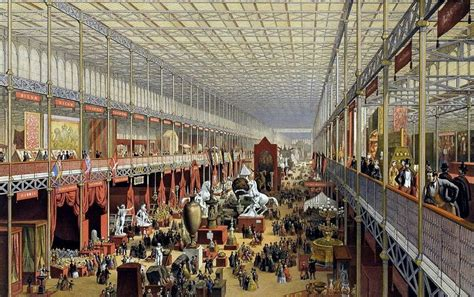

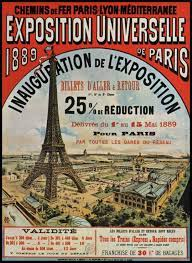














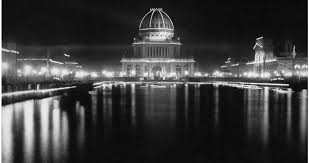














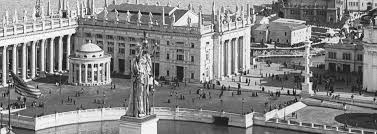














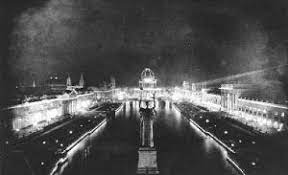

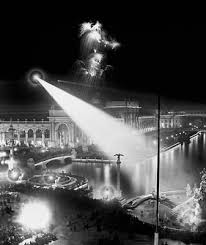

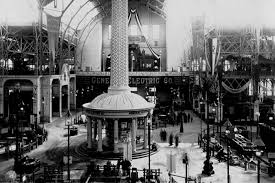



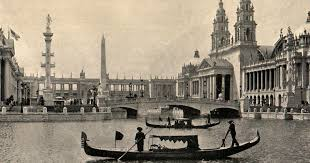


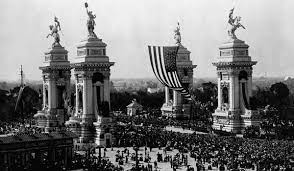





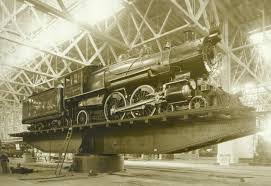




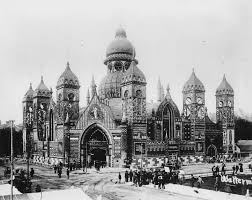






















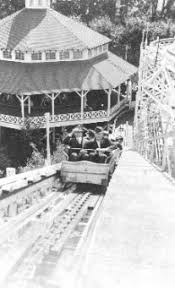













1 comment:
Thank you for this series.
Morgan at CGI
Post a Comment